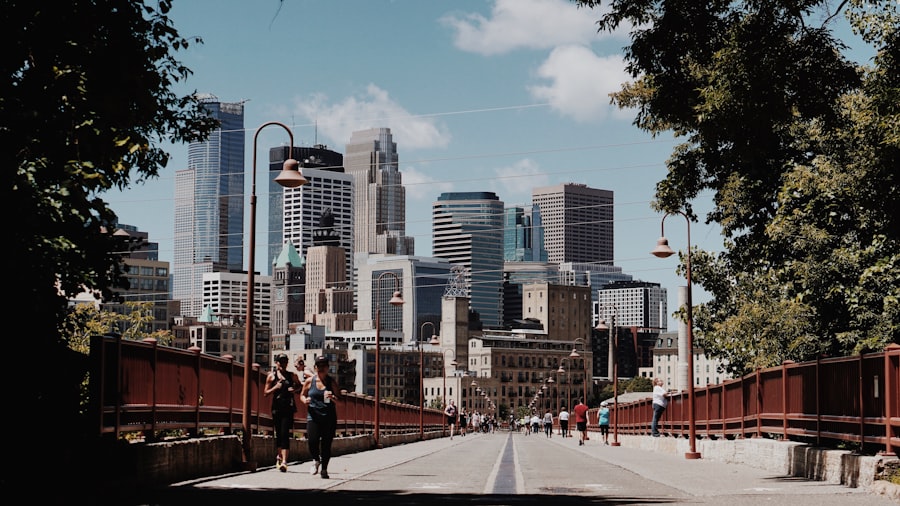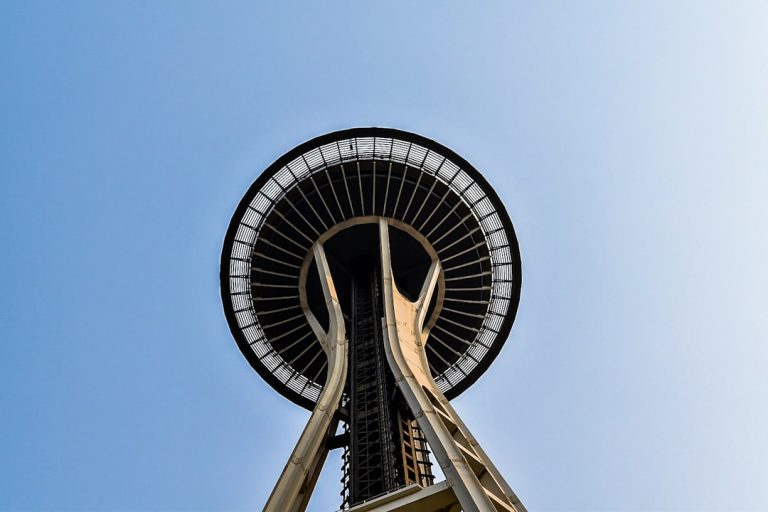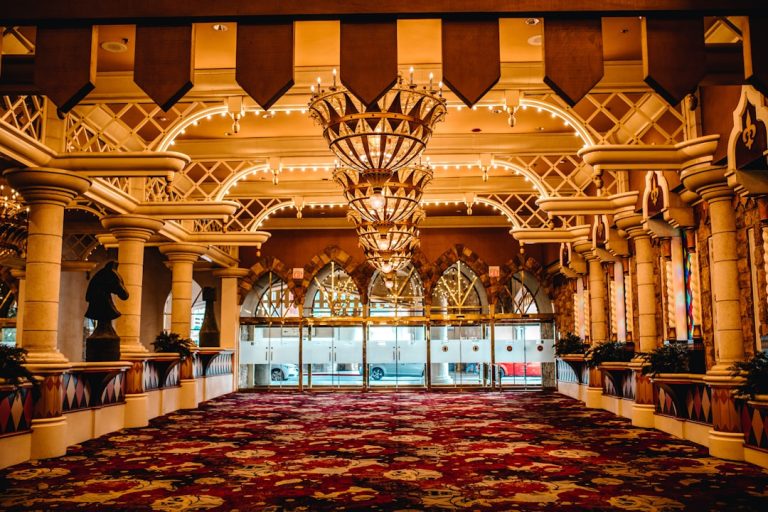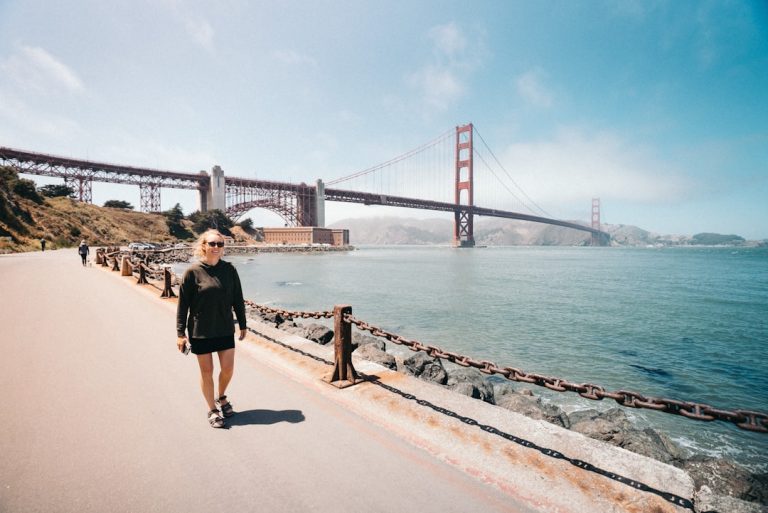
Minneapolis, the largest city in the state of Minnesota, is a vibrant urban center known for its rich cultural tapestry, stunning natural landscapes, and a thriving economy. Nestled alongside the banks of the Mississippi River, Minneapolis is part of the Twin Cities, which includes its neighbor, St. Paul. The city is characterized by its diverse population, innovative spirit, and a unique blend of urban and natural environments. With a population of over 400,000 residents, Minneapolis boasts a dynamic arts scene, a robust business community, and an array of recreational opportunities that attract both residents and visitors alike. The city’s layout is marked by a series of lakes and parks that provide a refreshing contrast to its urban landscape. Minneapolis is often recognized for its commitment to sustainability and green living, with an extensive network of bike paths and pedestrian-friendly streets. The city’s skyline is punctuated by modern skyscrapers, yet it also retains historical architecture that tells the story of its development from a milling hub in the 19th century to a contemporary metropolis. This juxtaposition of old and new creates a unique atmosphere that invites exploration and discovery.
Key Takeaways
- Minneapolis is a vibrant city known for its beautiful lakes, parks, and cultural attractions.
- Visitors can explore the city’s rich history and culture through its many museums and historical landmarks.
- Outdoor enthusiasts can enjoy a variety of recreational activities, from biking and hiking to water sports on the city’s lakes.
- Minneapolis offers a diverse dining scene, with a wide range of culinary options to suit every palate.
- The city is also a great destination for shopping and entertainment, with numerous shops, theaters, and live music venues to explore.
- When navigating the city, consider using public transportation or renting a bike to easily get around and explore all that Minneapolis has to offer.
Historical and Cultural Sights
Minneapolis is steeped in history, with numerous landmarks that reflect its past. One of the most significant sites is the Mill City Museum, located on the ruins of what was once the world’s largest flour mill. This museum offers an immersive experience into the city’s milling history, showcasing interactive exhibits that detail the rise of Minneapolis as a center for grain production.
Visitors can explore the remnants of the mill and enjoy panoramic views of the Mississippi River from the museum’s observation deck. Another notable cultural site is the Walker Art Center, one of the leading contemporary art museums in the United States. The Walker features an impressive collection of modern art, including works by renowned artists such as Andy Warhol and Jasper Johns.
Adjacent to the museum is the Minneapolis Sculpture Garden, home to over 40 sculptures, including the iconic Spoonbridge and Cherry fountain. This outdoor space serves as a testament to the city’s commitment to public art and provides a serene environment for both art enthusiasts and casual visitors.
Once an industrial hub, this neighborhood has transformed into a vibrant arts district filled with galleries, studios, and performance spaces. The area hosts events such as Art-A-Whirl, an annual open studio tour that showcases local artists and their work. This celebration of creativity highlights the city’s artistic spirit and fosters community engagement.
Outdoor and Recreational Activities

Minneapolis is often referred to as the “City of Lakes,” and for good reason. The city is home to numerous lakes, parks, and recreational areas that offer a plethora of outdoor activities year-round. Lake Calhoun (Bde Maka Ska) and Lake Harriet are two of the most popular destinations for residents and visitors alike.
These lakes provide opportunities for swimming, kayaking, paddleboarding, and sailing during the warmer months. In winter, they transform into ice skating rinks and cross-country skiing trails, showcasing the city’s adaptability to seasonal changes. The Chain of Lakes is interconnected by scenic trails that are perfect for biking, jogging, or leisurely walks.
The Grand Rounds Scenic Byway encircles the city’s lakes and parks, providing a picturesque route for those looking to explore Minneapolis’ natural beauty. The extensive trail system not only promotes an active lifestyle but also allows residents to connect with nature without leaving the urban environment. In addition to its lakes, Minneapolis boasts an impressive array of parks.
The Theodore Wirth Regional Park is one of the largest urban parks in the country, offering hiking trails, golf courses, and even a ski area in winter. The park’s expansive green spaces are ideal for picnics, family gatherings, or simply enjoying a day outdoors. The city’s commitment to maintaining these natural spaces reflects its dedication to promoting health and wellness among its residents.
Dining and Culinary Scene
| City | Number of Restaurants | Top Cuisine |
|---|---|---|
| New York | 24,000 | American |
| Paris | 15,000 | French |
| Tokyo | 80,000 | Japanese |
The culinary landscape in Minneapolis is as diverse as its population, offering a wide range of dining options that cater to various tastes and preferences. From farm-to-table restaurants to international cuisine, the city has established itself as a culinary hotspot in recent years. One standout establishment is Spoon and Stable, helmed by James Beard Award-winning chef Gavin Kaysen.
This restaurant emphasizes locally sourced ingredients and seasonal menus that highlight Minnesota’s agricultural bounty. For those seeking international flavors, Minneapolis does not disappoint. The Midtown Global Market is a vibrant marketplace that showcases food vendors from around the world.
Here, visitors can sample everything from authentic Mexican tacos to Ethiopian injera. This culinary melting pot reflects the city’s multicultural identity and provides an opportunity for diners to explore global cuisines without leaving their neighborhood. Minneapolis also has a burgeoning craft beer scene that complements its dining offerings.
With numerous breweries scattered throughout the city, beer enthusiasts can embark on a tasting tour to sample local brews. Surly Brewing Co., known for its bold flavors and innovative styles, has become a local favorite. Many breweries also feature taprooms where patrons can enjoy food pairings alongside their drinks, creating a communal atmosphere that fosters social interaction.
Shopping and Entertainment
Shopping in Minneapolis offers a blend of high-end retail experiences and unique local boutiques. The Mall of America, located just outside the city in Bloomington, is one of the largest shopping centers in the United States. With over 500 stores, an indoor amusement park, an aquarium, and numerous dining options, it serves as a one-stop destination for shoppers seeking variety and entertainment.
The mall attracts millions of visitors each year and has become an iconic symbol of Minnesota’s retail landscape. In addition to large shopping centers, Minneapolis boasts several neighborhoods known for their distinctive shopping experiences.
Similarly, Nicollet Mall in downtown Minneapolis offers a mix of national retailers and local shops, making it a popular destination for both locals and tourists. Entertainment options in Minneapolis are equally diverse. The city is home to a thriving theater scene, with venues such as the Guthrie Theater offering world-class performances ranging from classic plays to contemporary works.
The Orpheum Theatre hosts Broadway shows and concerts, while smaller venues like First Avenue provide an intimate setting for live music performances across various genres. This rich cultural landscape ensures that there is always something happening in Minneapolis, whether it be a concert under the stars or an art exhibition opening.
Tips for Navigating the City

Navigating Minneapolis can be an enjoyable experience with some planning and knowledge about the city’s layout. Public transportation options are readily available through Metro Transit, which operates buses and light rail services throughout the metropolitan area. The light rail connects key destinations such as downtown Minneapolis, the Mall of America, and the University of Minnesota campus, making it easy for visitors to explore without needing a car.
For those who prefer biking or walking, Minneapolis is consistently ranked as one of the most bike-friendly cities in the United States. The extensive network of bike lanes and trails makes it convenient for cyclists to navigate through neighborhoods while enjoying scenic views along the way. Bike-sharing programs like Nice Ride offer rental options for those who do not own bicycles but wish to explore on two wheels.
When visiting during winter months, it’s essential to dress appropriately for the cold weather. Layering clothing is advisable due to fluctuating temperatures throughout the day. Additionally, many attractions are accessible via heated indoor walkways or skyways that connect buildings in downtown Minneapolis, allowing visitors to traverse the city comfortably even in frigid conditions.
Understanding local customs can also enhance your experience in Minneapolis. Minnesotans are known for their friendliness and hospitality; engaging with locals can lead to valuable recommendations on hidden gems within the city. Whether you’re seeking dining suggestions or tips on lesser-known attractions, taking time to connect with residents can enrich your visit significantly.
In summary, Minneapolis offers a multifaceted experience that combines history, culture, outdoor activities, culinary delights, shopping opportunities, and entertainment options all within an accessible urban environment. With its commitment to sustainability and community engagement, this city continues to evolve while maintaining its unique character that draws people from all walks of life.
If you’re intrigued by the diverse attractions and cultural highlights of Minneapolis, Minnesota, you might also enjoy exploring similar insights about another vibrant city. Check out this related article on Wichita, Kansas: Facts and Places to Visit. Like Minneapolis, Wichita offers a unique blend of historical sites, modern attractions, and engaging activities that are perfect for travelers looking to enrich their understanding of different American cities.
FAQs
What are some interesting facts about Minneapolis, Minnesota?
– Minneapolis is the largest city in the state of Minnesota.
– The city is known for its numerous lakes, with over 20 within the city limits.
– Minneapolis has a thriving arts scene, with the Minneapolis Institute of Art and the Walker Art Center being popular attractions.
– The city is home to the Mall of America, the largest mall in the United States.
What are some popular places to visit in Minneapolis?
– The Mall of America, a massive shopping and entertainment complex.
– The Minneapolis Sculpture Garden, featuring the iconic Spoonbridge and Cherry sculpture.
– The Chain of Lakes, a series of scenic lakes offering opportunities for outdoor activities.
– The Mill City Museum, which showcases the history of Minneapolis as a flour milling center.
What are some things to see in Minneapolis?
– The Guthrie Theater, known for its striking architecture and innovative performances.
– The historic Stone Arch Bridge, offering picturesque views of the city and Mississippi River.
– The Minnesota Zoo, home to a wide variety of animals and educational exhibits.
– The Minneapolis Skyway System, a network of enclosed pedestrian bridges connecting various downtown buildings.






